#Azawagh
Explore tagged Tumblr posts
Text
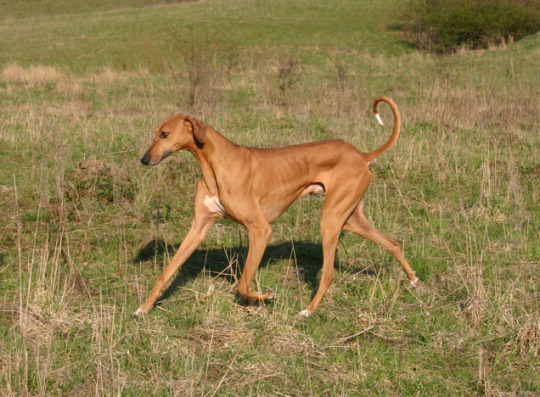
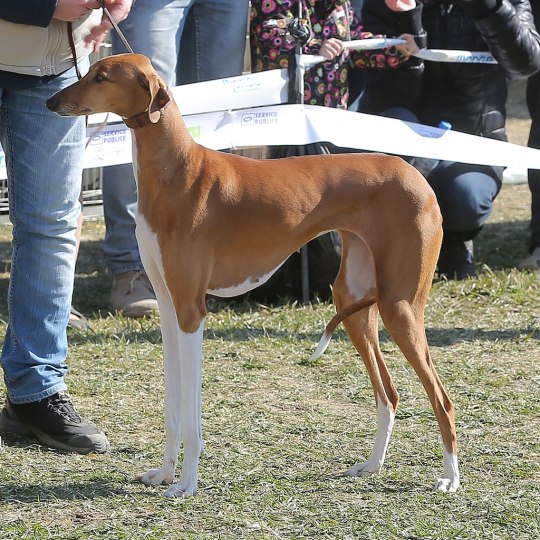
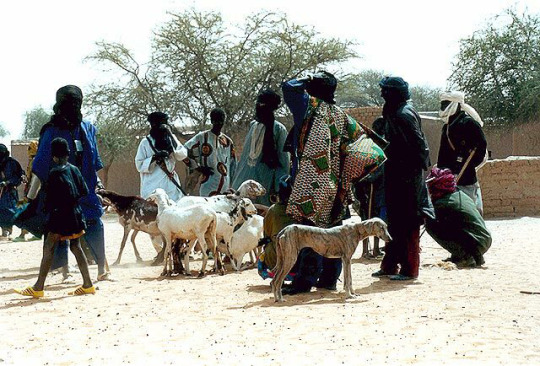
The Azawakh is an ancient sighthound dog breed from West Africa. It is raised throughout the Sahelian zone of Mali, Niger, and Burkina Faso. This region includes the Azawagh Valley for which the breed is named.
The Azawakh is a multipurpose breed and is used mainly for hunting, as a livestock guardian and as a general guard dog. Unlike a lot of guardian breeds, the Azawakh is highly social and thrives in a pack with a complex social hierarchy. They are very protective of their owners and wary of strangers.
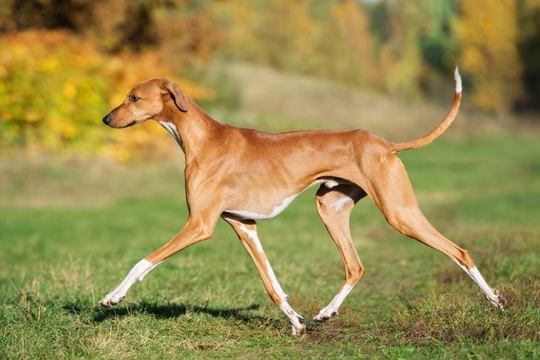
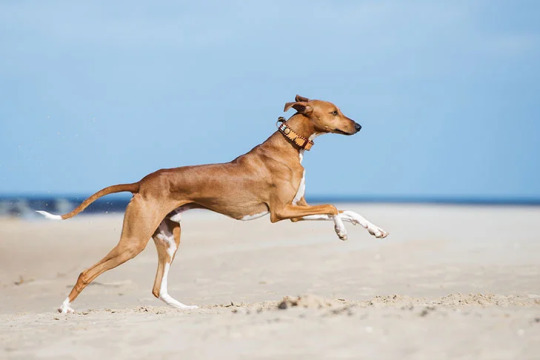
#azawakh#lgd#livestock guardian dog#working dogs#hunting dogs#dogs#dogs with jobs#original posts#this is a dog breed i've actually been considering adding to my homestead in the future#i'm highly interested in rare dog breeds#q#sighthound
52 notes
·
View notes
Text

Tifinagh alphabet, from Aghali-Zakara (1993 and 2002): Hoggar (Algeria); Aïr (Niger); Ghat (Libya); Azawagh (Niger-Mali); and Adghagh (Mali)
"The "written landscape" of the central Sahara: recording and digitising the Tifinagh inscriptions in the Tadrart Acacus Mountains" by Savino Di Lernia and Stefano Biagetti
#tifinagh#amazigh#imazighen#anthropology#writing systems#alphabet#archaeology#sahara#acacus mountains#amazigh people#tuareg#rock art#petroglyphs#kel tadrart#my upl
16 notes
·
View notes
Text
Tientallen Amazigh dorpelingen gedood door terroristen in Niger
Tientallen Toeareg dorpelingen zijn afgelopen zondag gedood in het dodelijkste terroristische bloedbad dat Niger ooit heeft getroffen, dat melden internationale media waaronder Daily Mail en The Guardian. Regeringswoordvoerder Zakaria Abdourahamane zei dat 137 mensen zijn omgekomen bij de aanvallen van zondag in dorpen in de Tahoua-regio, vlakbij de grens van Niger met Mali. Schutters die op…

View On WordPress
0 notes
Video
youtube
youtube
youtube
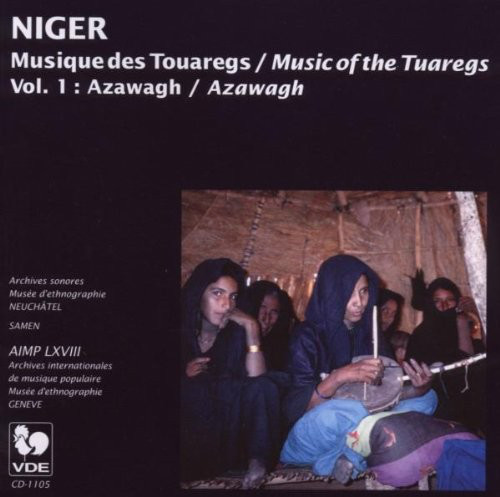
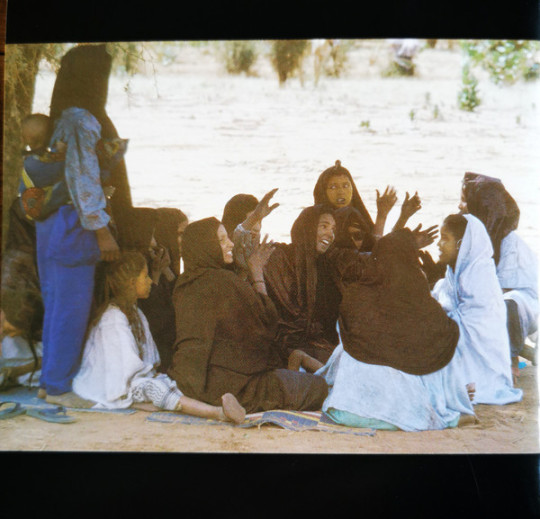

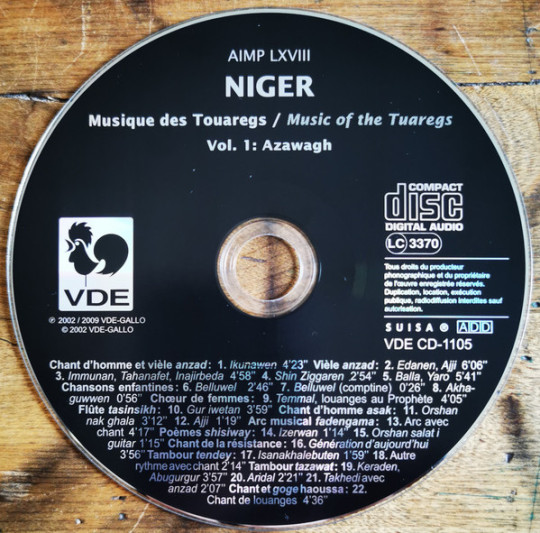
Chanson Enfantines / Children's Songs: Belluwel + Belluwel (Comptine) + Akhaguwwen from: VA - Niger, Music of the Tuaregs, Vol. 1 - Azawagh (VDE-Gall, 2002) VDE CD-1105
10 notes
·
View notes
Text
Separatist and irredentist movements in the world
Agadez
Proposed state: Tenere Republic
Region: Agadez Region, Niger
Ethnic group: Tuareg
Goal: autonomy or independence
Date: 1990-present
Political parties: Tidot Union of Tenere
Militant organizations: Front for the Liberation of Aïr and Azawagh (FLAA), Revolutionary Armed Forces of the Sahara
Current status: inactive
History
15th century-20th century - Sultanate of Agadez
1916-1917 - Kaocen revolt
1960 - independence of Niger
1990-1995 - Tuareg rebellion
2007-2009 - Second Tuareg Rebellion
The Sultanate of Agadez was an Amazigh kingdom centered in the city of Agadez in the Aïr Mountains and is arguably the most important historical motivation for the Agadez autonomy movement. However, the movement should be framed within the wider Tuareg struggle against colonial powers and modern states.
The Kaocen revolt was the first manifestation of Tuareg disaffection with French rule. The feeling continued following Niger’s independence, especially after the uranium mining boom in the Agadez Region and repeated droughts and famines. The Tuareg saw little recompense from the economic profit and rebelled in 1990. Finally, the Niger government and the rebel groups negotiated and concluded a peace deal that promised the Tuareg a bigger share of the region's wealth.
However, almost a decade later, the rebels claimed that the government had failed to honor the 1995 peace agreement and started to fight against the government again. In 2009, a peace deal brought a negotiated ceasefire and amnesty.
There is no clear plan for Agadez autonomy or defined borders for the territory, as the struggle is focused on stressing Tuareg self-determination but does not specify in which way.

Tuareg people
There are significant Tuareg populations in Algeria, Burkina Faso, Libya, Mali, Niger, and Nigeria. The largest Tuareg populations can be found in Niger, and they mainly belong to the Iwellemmedan and Kel Owey clan confederations. The Iwellemmedan speak the Tawellemmet variant of the Tamasheq language, while the Kel Owey speak the Air Tamajeq variety. Tamasheq belongs to the Afro-Asiatic family.
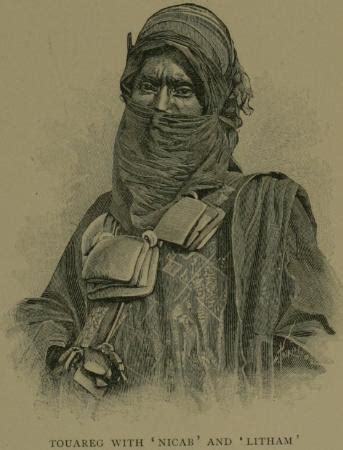
There are around 4.2 million Tuareg. They are predominantly Sunni Muslims but traditionally followed Amazigh religion.
They are nomadic pastoralists and organized in clans with social stratification.
Vocabulary
Akal N Tenere - Tenere Republic
Ămahăɣ - Tuareg
ataram - west
dinnik - east
išnəyăn - blood
kətəyyət - to die
Kel Owey - People of the Bull
sakaka - to revolt
Tafaghist - Tamasheq
Taniminnak Tidot N Tenere - Tidot Union of Tenere
Tayiṛt - Air Tamajeq
tenere - desert
tihí - homeland
tiwsaten - clan
əlghina - independence
8 notes
·
View notes
Photo

56) Arabowie Azawagh, Azawagh Arabs (arab. عرب أزواغ) (znani również jako koczowniczy Maurowie) to koczownicze plemiona etniczne pochodzenia arabskiego, które osiedlają się głównie na obszarze Azawagh, który jest suchym basenem obejmującym dzisiejszy północno-zachodni Niger, a także części północno-wschodnie Mali i południową Algierię. Nazwa Arabów Azawagh pochodzi od regionu Azawagh na Saharze i mówiący po arabsku hassaniya, który jest jedną z regionalnych odmian języka arabskiego.
0 notes
Text
Meet the Azawakh, the latest breed to enter the Westminster Dog Show
These beauties have been traveling with nomadic groups in West Africa for over a thousand years. (Alona Rjabceva/)
As the Westminster Dog Show came to a close last night, New York City became just a bit less fluffy. It can be hard to say goodbye to the gorgeous pooches ranging from wee Pomeranians to giant Bernese Mountain Dogs that have been trotting their hearts out around the rings in Madison Square Garden.
I’m not here to stop you from googling your favorite pooches to relive the experience. In fact, maybe I can help feed your obsession. Here’s everything you ever wanted to know about the newest addition to the official line up competing for Best of Show: Meet the Azawakhs.
The Azawakh looks something like a cross between a star ballerina and a miniature Arabian horse — taller than it’s length, with a long elegant neck and dark expressive eyes. Their long, skinny bodies reach somewhere between 23 and 29 inches in height. A grown Azawakh typically weighs just 33 to 55 pounds, depending on its gender, which means you should see their ribs at a healthy weight. They might come off as aloof to a regular bystander, but absolutely adore their human families, and once they get to know them, they can be gentle with other dogs and cats, too.
These pups have been on the AKC’s miscellaneous class list since 2011, home to other dog breeds like the Lancashire Heeler and Teddy Roosevelt Terrier, as they awaited official recognition. They joined the big leagues in the Hound Group through AKC in 2019 and became eligible to waltz around Westminster for the first time this year.
But just because they are new to the ring doesn’t mean the breed is novel. The Azawakh, named for the Azawagh Valley of its origin, is what is called a “landrace,” says Carol Beuchat, the Scientific Director of the Institute of Canine Biology. “Landrace” basically means that these populations of specific dogs evolved to function in a precise location. The breed has traveled with nomadic tribes like the Tuareg in modern-day Mali, Niger, and Burkina Faso with ancestry for over a thousand years. Archaeologists reportedly were able to find rare 8,000 to 10,000-year-old petroglyph rock art featuring long, slim dogs running alongside their hunter owners.
These pups are built to run and withstand hot, dry climates. (Alona Rjabceva/)
The hot, arid environment of West Africa made the Azawakh the way it is — a leggy, lean dog with great speed, Beuchat says. “They are bred by the nomadic tribes, but there is strong artificial and natural selection for strong, sound dogs with high heat tolerance and speed.”
Prior to its designation this year, the Azawakh was not alone. A lot of dog breeds don’t have official recognition — Beuchat estimates this number to be around 1,000 — many of which are landraces, dogs that evolved around their specific homeland. Many of the 400 recognized breeds we know and love today, like French bulldogs and dachshunds, started developing in the past few centuries, she adds.
According to an extensive article by breeder Deb Kidwell on the American Azawakh Association website, the first Azawakh to head to Europe was given to a Yugoslavian diplomat to Burkina Faso in the 1970’s. By the mid-1980s, the first Azawakh reached American shores and gave birth to America’s first natural-born Azawakh litter on Halloween in 1987. That next year, the American Azawakh Association was founded.
AKC judge and American Azawakh Association director Fabian Arienti has been breeding Pomeranians for some 40 years. At a dog show in Argentina in 1992, he spotted an Azawakh and fell in love.
“They look, for me, like a piece of art,” Arienti says. He showed three of the six Azawakhs presented at the breed competition last Sunday.
Aliya Taylor, a former Philadelphia cop who made headlines for showing her Azawakh at the National Dog Show wearing a hijab, loves the dogs because of their temperament and beautiful appearance. She is also fond of the connection between their West African ancestral ties and her own. Right now, this breed is quite rare outside of Africa. While Taylor is excited to have them recognized, she hopes they won’t become too popular to the point that people adopt them without knowing their needs.
“Azawakhs are a very nice breed for people who understand them,” she says.
If this rare African hound has caught your eye, there are a few essentials to consider: these pups aren’t big fans of the cold and wet weather, need quite a bit of exercise and socialization, and will become your most loyal and adoring guardian.
0 notes
Text
Meet the Azawakh, the latest breed to enter the Westminster Dog Show
These beauties have been traveling with nomadic groups in West Africa for over a thousand years. (Alona Rjabceva/)
As the Westminster Dog Show came to a close last night, New York City became just a bit less fluffy. It can be hard to say goodbye to the gorgeous pooches ranging from wee Pomeranians to giant Bernese Mountain Dogs that have been trotting their hearts out around the rings in Madison Square Garden.
I’m not here to stop you from googling your favorite pooches to relive the experience. In fact, maybe I can help feed your obsession. Here’s everything you ever wanted to know about the newest addition to the official line up competing for Best of Show: Meet the Azawakhs.
The Azawakh looks something like a cross between a star ballerina and a miniature Arabian horse — taller than it’s length, with a long elegant neck and dark expressive eyes. Their long, skinny bodies reach somewhere between 23 and 29 inches in height. A grown Azawakh typically weighs just 33 to 55 pounds, depending on its gender, which means you should see their ribs at a healthy weight. They might come off as aloof to a regular bystander, but absolutely adore their human families, and once they get to know them, they can be gentle with other dogs and cats, too.
These pups have been on the AKC’s miscellaneous class list since 2011, home to other dog breeds like the Lancashire Heeler and Teddy Roosevelt Terrier, as they awaited official recognition. They joined the big leagues in the Hound Group through AKC in 2019 and became eligible to waltz around Westminster for the first time this year.
But just because they are new to the ring doesn’t mean the breed is novel. The Azawakh, named for the Azawagh Valley of its origin, is what is called a “landrace,” says Carol Beuchat, the Scientific Director of the Institute of Canine Biology. “Landrace” basically means that these populations of specific dogs evolved to function in a precise location. The breed has traveled with nomadic tribes like the Tuareg in modern-day Mali, Niger, and Burkina Faso with ancestry for over a thousand years. Archaeologists reportedly were able to find rare 8,000 to 10,000-year-old petroglyph rock art featuring long, slim dogs running alongside their hunter owners.
These pups are built to run and withstand hot, dry climates. (Alona Rjabceva/)
The hot, arid environment of West Africa made the Azawakh the way it is — a leggy, lean dog with great speed, Beuchat says. “They are bred by the nomadic tribes, but there is strong artificial and natural selection for strong, sound dogs with high heat tolerance and speed.”
Prior to its designation this year, the Azawakh was not alone. A lot of dog breeds don’t have official recognition — Beuchat estimates this number to be around 1,000 — many of which are landraces, dogs that evolved around their specific homeland. Many of the 400 recognized breeds we know and love today, like French bulldogs and dachshunds, started developing in the past few centuries, she adds.
According to an extensive article by breeder Deb Kidwell on the American Azawakh Association website, the first Azawakh to head to Europe was given to a Yugoslavian diplomat to Burkina Faso in the 1970’s. By the mid-1980s, the first Azawakh reached American shores and gave birth to America’s first natural-born Azawakh litter on Halloween in 1987. That next year, the American Azawakh Association was founded.
AKC judge and American Azawakh Association director Fabian Arienti has been breeding Pomeranians for some 40 years. At a dog show in Argentina in 1992, he spotted an Azawakh and fell in love.
“They look, for me, like a piece of art,” Arienti says. He showed three of the six Azawakhs presented at the breed competition last Sunday.
Aliya Taylor, a former Philadelphia cop who made headlines for showing her Azawakh at the National Dog Show wearing a hijab, loves the dogs because of their temperament and beautiful appearance. She is also fond of the connection between their West African ancestral ties and her own. Right now, this breed is quite rare outside of Africa. While Taylor is excited to have them recognized, she hopes they won’t become too popular to the point that people adopt them without knowing their needs.
“Azawakhs are a very nice breed for people who understand them,” she says.
If this rare African hound has caught your eye, there are a few essentials to consider: these pups aren’t big fans of the cold and wet weather, need quite a bit of exercise and socialization, and will become your most loyal and adoring guardian.
0 notes
Text
women & beauty
there are undoubtedly some characteristics of a woman's face and body that are considered universally beautiful among all cultures: facial and bodily symmetry, smooth skin and youthfulness, and a certain waist:hip ratio that varies only slightly cross-culturally.
our babies are seemingly innately drawn to faces we consider attractive, which tells us that not all beauty ideals are culturally constructed. but of course there are incredible variations across cultures that dictates what is attractive for women to wear, what their body parts should look like, and what size they should be. in today's north america and in much of europe thin women dominate mass media. they are often idolized in magazines, on the runway, and in day-to-day life; meanwhile, fat women suffer the opposite. but you do not need me to tell you this; to continue on arguing this point would be as to beat a dead horse given the amount of attention focused on the pressure women of all sizes face in western culture.
I. Azawagh Arab women
while all cultures prefer women to have a certain amount of curve or a distinguished waist:hip ratio, the preferred size of women through time and across cultures is hugely variant. the Azawagh Arab women provide one example of what most of western society might find even repulsive: women are expected to be large and much of their daily life they must eat high fat foods to maintain their size. the Azawagh Arabs see fatness as beautiful, sexy and womanly. a surface understanding of desirable body size might attribute this to the availability of food; where food is scarce, to be fat means to be wealthy and of higher social class. while this is certainly a valid hypothesis it is not necessarily the only factor in considering why fatness is considered so beautiful.
girls begin the fattening process when they lose their first baby teeth. their mothers and grandmothers are in charge of ensuring that the girls eat enough to fatten. they eat very healthy foods including milk, porridge, and grains. they have complicated rules that surround what to eat and when, and they follow a humoral belief system of the body whereby the body will be healthy or ill depending on how 'hot' or 'cold' and how 'open' or 'closed' it is; foods can also be categorized under this system.
Rebecca Popenoe studied and wrote her ethnography about the Azawagh Arabs called 'Feeding Desire' in the early 2000s. she suggests that their view of fat women as attractive is deeply interwoven with other cultural views, and not just as representative of the difficulty of acquiring food in a desert. they explain fatness as attractive, that men like it, and that it accelerates the change of a girl into womanhood. Popenoe suggests that Islam plays a significant role in their construction of beauty, and although the Azawagh Arabs are not blatant about this fact they are insistent about Islam's centrality to their lives. Azawagh Arabs see women and men as inherently different by the word of God, and this is what makes them attracted to one another. fattening women increases that difference and thus the attraction. plumper men in this society are mocked for being feminine; fatness is a characteristic of beauty exclusive to women to reinforce the differences between them.
it is worth noting that while our perception of fatness is that it is unhealthy, these women eat incredibly healthily and do not suffer the illnesses that many obese women in north america do to the same degree, and in fact our obsession with thinness has had very negative effects in terms of mental health in both young women and men.
7 notes
·
View notes